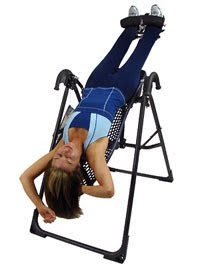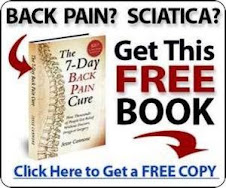The Benefits of Using Decompression Therapy for Back Pain
By Ross Carter
There are millions of people suffering from low back pain due to herniated and bulging discs who do not know where to go for treatment. Most of them simply take prescribed medicines to relieve the pain. However, medicines can only provide temporary relief. Surgery is another option but it is expensive and sometimes it does not guarantee success. For these reasons, pain sufferers choose to get relief through alternative treatment.
Decompression therapy is an FDA approved non-surgical, drug-free treatment that uses computer-controlled traction to reduce pressure in the spinal discs by gently stretching the spine. It is intended for patients suffering from back pain due to herniated disc. It can also work for patients who did not get relief from conventional treatments, and patients suffering from other conditions such as neck pain, degenerative disc disease, sciatica, radiculopathy, spinal arthritis, spinal stenosis, and facet syndrome.
A person with a bulging or herniated disc may feel back pain. The disc can be returned to normal with the help of decompression therapy. As the patient is lying comfortably on the decompression table, the computer-controlled traction device is programmed to apply gentle stretching force to the vertebra. This activity helps the disc to absorb the nutrients needed to heal the disc, thereby eliminating pain and discomfort. The therapy is painless and patients find it relaxing and they feel sense of relief, and some even tend to fall asleep while the procedure is taking place.
Decompression therapy can be an excellent treatment option to avoid back surgery. Back surgery, aside from being expensive, often has poor results for pain relief and has many risks and complications. That is why it is always better to avoid surgery if possible.
Although a traction-based treatment, decompression therapy is still different from a regular traction. Spinal decompression separates the affected spinal segments only so it can allow the nutrients to get to the damaged discs. Regular traction on the other hand only stretches the muscles.
Decompression therapy can be an effective treatment for a great majority of back pain sufferers, due to a very obvious result - it works. It has been treating a wide range of problems, improving function and optimizing patient health. So many people had long and distressing stories with chronic pain have enjoyed complete cure or drastic pain reduction after receiving the treatment.
Decompression therapy starts with a consultation with a chiropractor who can evaluate the patient with a history and detailed musculoskeletal examination. This treatment is safe and may be beneficial for back pain whether it is acute or chronic. Lasting pain relief can be achieved with a series of sessions.
Are you having a hard life because of back pain? Decompression Therapy Lawrenceville GA is the treatment that offers long-term relief from back pain and other spine-related problems. Learn how to improve your health and function by visiting www.gentledr.com today.
Article Source: http://EzineArticles.com/?expert=Ross_Carter
http://EzineArticles.com/?The-Benefits-of-Using-Decompression-Therapy-for-Back-Pain&id=6345180








